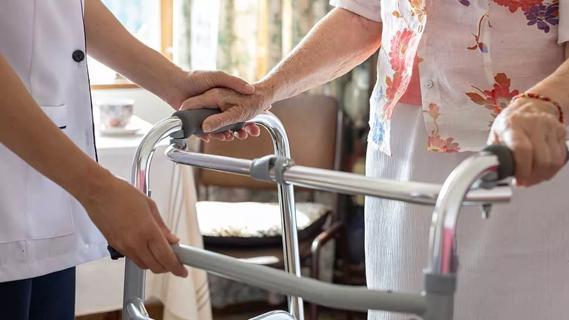Research on better diagnosis and treatment continues

Creamy or crunchy – and oh, so spreadable – peanut butter is not your first thought as a possible game-changer in Alzheimer’s disease research.
Advertisement
Cleveland Clinic is a non-profit academic medical center. Advertising on our site helps support our mission. We do not endorse non-Cleveland Clinic products or services. Policy
But it has potential, according to researchers at the University of Florida. They conducted a peanut butter smell test hoping to find an inexpensive, noninvasive way to detect early-stage Alzheimer’s and track its progress.
The test was conducted on cognitively normal individuals as well as:
The researchers found that the peanut butter test singled out those with probable Alzheimer’s.
Here’s how they conducted the test. The researchers asked each person to close their eyes, their mouth and one nostril. They opened a small container of peanut butter and moved progressively closer until the person could smell it. After measuring that distance, they waited 90 seconds and repeated the process with the other nostril.
In those with probable Alzheimer’s disease, the researchers had to move the peanut butter container an average of 10 centimeters closer to the left nostril than to the right nostril.
“This is a very interesting part of this study,” notes Dylan Wint, MD, a specialist in degenerative brain diseases who commented on the research. “There is a lot of research showing Alzheimer-related brain shrinkage usually starting on the left side of the brain, which is where the temporal lobe degenerates first.”
Advertisement
The investigators, who published their study in 2013, said follow up research would be needed.
However, a follow-up study in 2014 at the University of Pennsylvania could not replicate their results. The second research team found no difference in the ability of 15 patients with Alzheimer’s to smell peanut butter in their left versus their right nostrils.
“This highlights the scientific importance of studies being repeated and refined by other researchers in different patient populations,” says Dr. Wint. “Intriguing results don’t always hold true across all study populations.”
Research continues on Alzheimer’s disease as well as on mild cognitive impairment.
“The accessibility of current Alzheimer’s tests is one of the issues that is making diagnosis and research difficult,” notes Dr. Wint.
Currently, the most accurate early-stage diagnostic tests for Alzheimer’s are a spinal tap or an amyloid PET scan. However, these tests are expensive, uncomfortable and not available everywhere.
“The amyloid PET scan can cost $5,000, and that is just to figure out who should be studied in any Alzheimer’s study for early-stage diagnosis,” he says.
Accurate, accessible and inexpensive testing could inform more patients about their Alzheimer’s disease status. And diagnosing Alzheimer’s in its early stages is critical to finding treatments that can delay or prevent future memory loss.
Advertisement
Learn more about our editorial process.
Advertisement

Studies show the medication may have a protective effect, but more research is needed

Research suggests that up to 45% of current Alzheimer’s cases may have been avoidable

It’s critical to understand the wishes of your loved one and seek their involvement whenever possible

Your loved one may need help with daily activities, managing nutritional challenges and adapting their living space

Finding the causes of weight loss is key to treatment

Prevention and preparation can help you keep your loved one safe

This connection is yet another reason to seek help for OSA

Physical activity can help preserve and improve your cognitive function and fend off dementia, stroke and other health concerns

If your nose is constantly running, it could be allergies, chronic sinusitis, nasal polyps or other concerns

If you find yourself obsessing over rejection or a one-sided relationship, you’re likely stuck in limerence

Alcohol is a depressant and can interfere with your sleep, mood and more